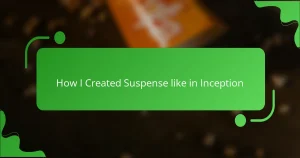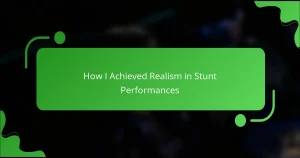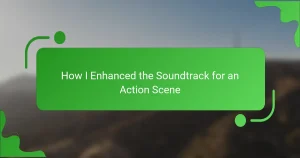Key takeaways
- Action short films rely on high-energy narratives and require effective visual storytelling, often using minimal character development.
- Storyboard creation is essential for clarity and collaboration, helping to streamline the filming and editing process for action sequences.
- Techniques like color coding, dynamic layouts, and careful shot composition enhance visual storytelling and the emotional connection with the audience.
- Choosing the right tools for storyboarding, including digital software, can significantly improve the efficiency and creativity of the filmmaking process.
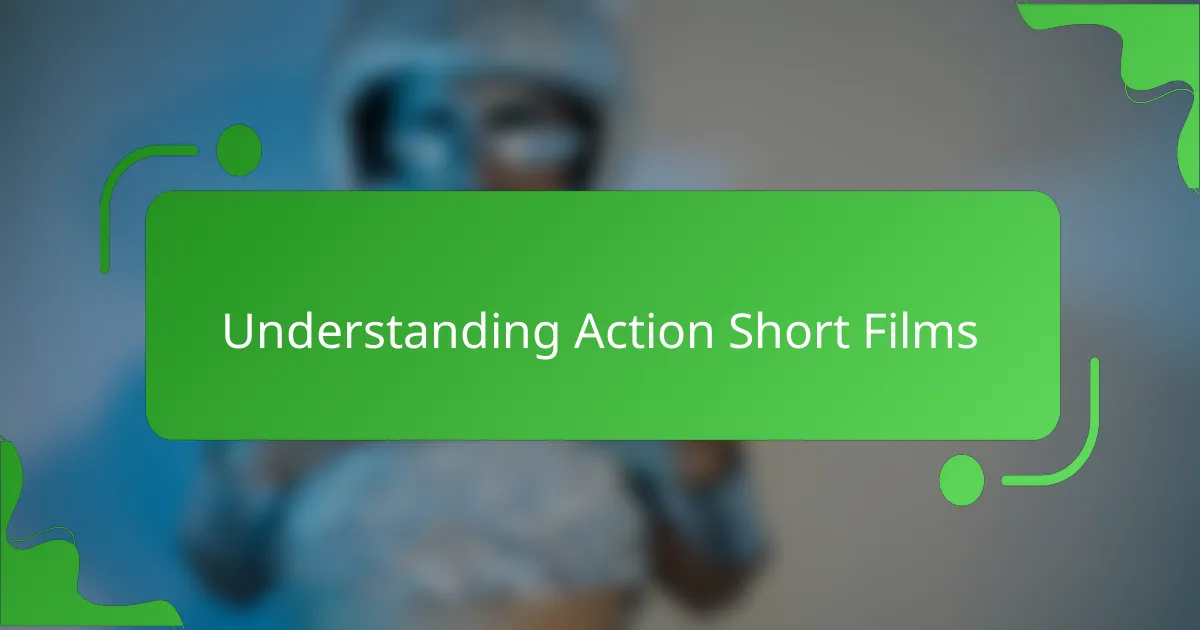
Understanding Action Short Films
Understanding action short films requires grasping their unique structure and pacing. From my experience, these films often distill high-energy narratives into a compact format, making every second count. The thrill of watching intense sequences unfold in just a few minutes is what draws many viewers in, and it’s exhilarating to create that heartbeat in my own work.
Inaction short films, the emphasis is on visual storytelling that captivates the audience quickly. The challenge is to convey emotion and action without the luxury of lengthy exposition. I’ve found that clear, dynamic storyboarding is essential for translating a complex vision into a seamless final product.
Here’s a comparison table reflecting some key elements of action short films:
| Element | Action Short Films |
|---|---|
| Duration | Typically under 10 minutes |
| Pacing | Fast and energetic |
| Character Development | Minimal, relies on visual cues |
| Storytelling Style | Visual-driven, often non-linear |
| Emotional Impact | High stakes in a compressed time |

Importance of Storyboarding
Storyboarding is crucial in crafting fast-paced edits, especially in action short films. From my experience, visualizing each scene helps maintain coherence while allowing for creative leaps during the editing process. I remember one project where a detailed storyboard saved me from a chaotic edit; it provided a clear roadmap that guided my decisions, making the overall narrative much sharper and engaging.
Also, storyboards serve as a communication tool for the entire team. When everyone is aligned on the visuals, it fosters a more collaborative environment that enhances creativity. Having a concrete reference makes it easier for actors, cinematographers, and editors to bring their best to the table.
Here’s a comparison of storyboarding versus going without it:
| Aspect | With Storyboarding | Without Storyboarding |
|---|---|---|
| Clarity | High clarity on scene flow and transitions | Often leads to confusion and disjointed edits |
| Collaboration | Encourages effective communication among team members | Can result in misalignment and conflicting visions |
| Creativity | Fosters creativity within a structured framework | May stifle creativity as scenes are shot without a clear plan |
| Time Efficiency | Speeds up editing by providing a detailed roadmap | Can lead to longer edit times and unnecessary rework |
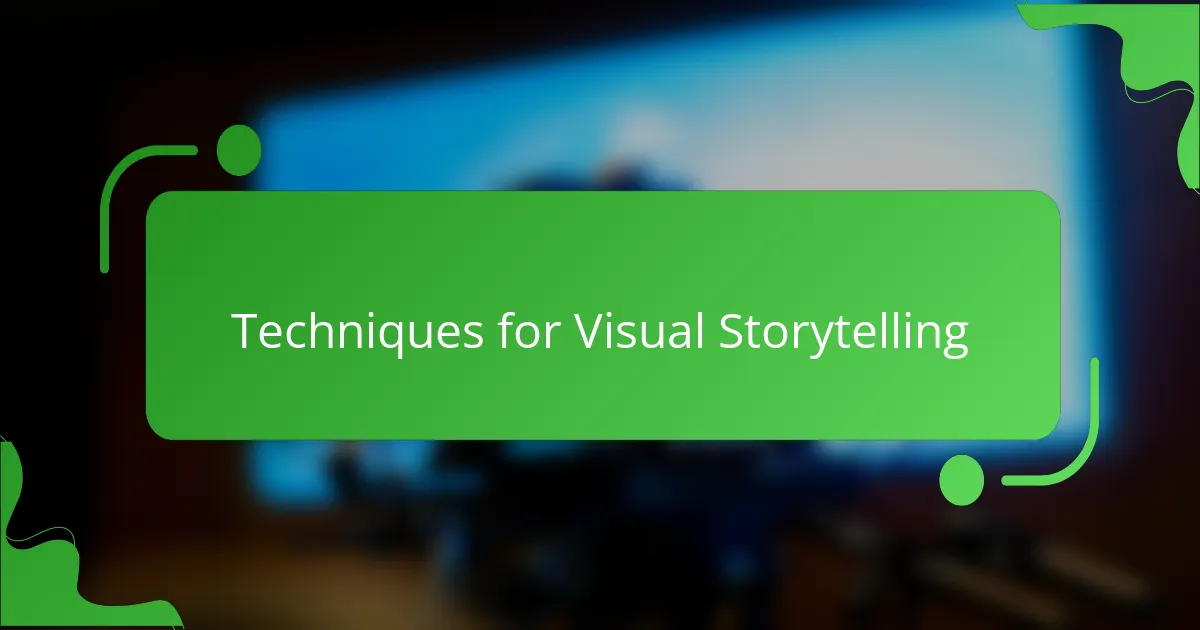
Techniques for Visual Storytelling
When I first delved into creating storyboards for fast-paced edits, I quickly learned that effective visual storytelling hinges on clarity and creativity. I remember a moment while working on a particularly intense action scene; I sketched rapid sequences in a dynamic layout to capture the momentum and emotional stakes. This approach not only helped me visualize the shots, but it also clarified how each frame would resonate with the audience, drawing them deep into the story.
One of the most impactful techniques I’ve employed is the use of color coding for different emotions and actions. By associating specific colors with feelings or narrative beats, I could instantly distinguish the mood of each shot and ensure a seamless flow. This strategy became invaluable as I worked through editing sequences, allowing for quick references during fast pacing, ensuring everything felt cohesive. Here’s a list of techniques that have proven beneficial:
- Color Coding: Assign emotions or actions to specific colors to create visual cues.
- Dynamic Layouts: Arrange storyboard panels in a non-linear fashion to emulate energy and motion.
- Thumbnail Sketches: Create quick sketches to capture action ideas without getting bogged down in detail.
- Key Frames: Identify and visualize critical moments that drive the narrative forward.
- Annotations: Add notes on potential camera angles and transitions to heighten the scene dynamics.
These strategies not only enhance visual storytelling but also nurture an emotional connection with the audience, making each edit resonate more powerfully.
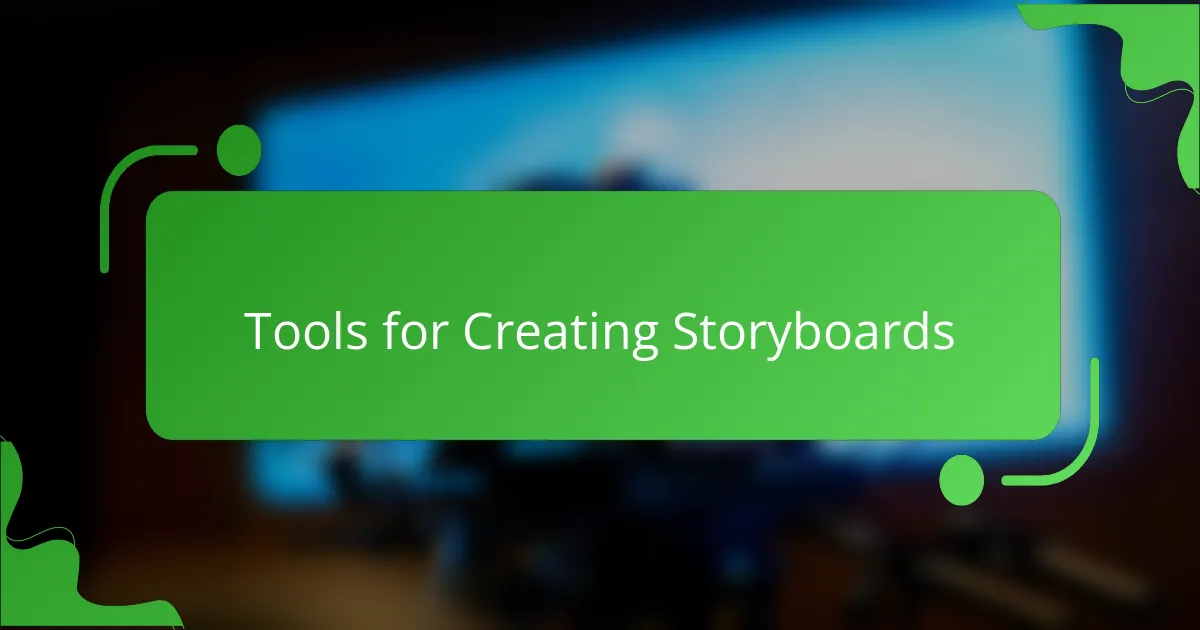
Tools for Creating Storyboards
When it comes to storyboarding for fast-paced edits, choosing the right tools can make all the difference. I remember the early days of my filmmaking journey when I would sketch storyboards on scrap paper. While it was a fun process, I often lost track of my ideas and struggled to visualize the flow. Now, I embrace digital tools that not only save time but also allow for easier manipulation of images and sequences.
Some essential tools I recommend include:
- Storyboard Pro: A robust software that allows for detailed drawings and animatics.
- Celtx: Great for scriptwriting and includes storyboard features to keep everything organized.
- Adobe Photoshop: Perfect for those who prefer more control over design elements.
- Toon Boom Storyboard: Ideal for animators, offering comprehensive features for dynamic storyboarding.
- Paper and Pencils: Sometimes, the classic method offers a creative freedom that digital tools can’t match.
Each of these tools has its own unique strengths, and I find that a combination often leads to the best results. What’s your experience with these tools?
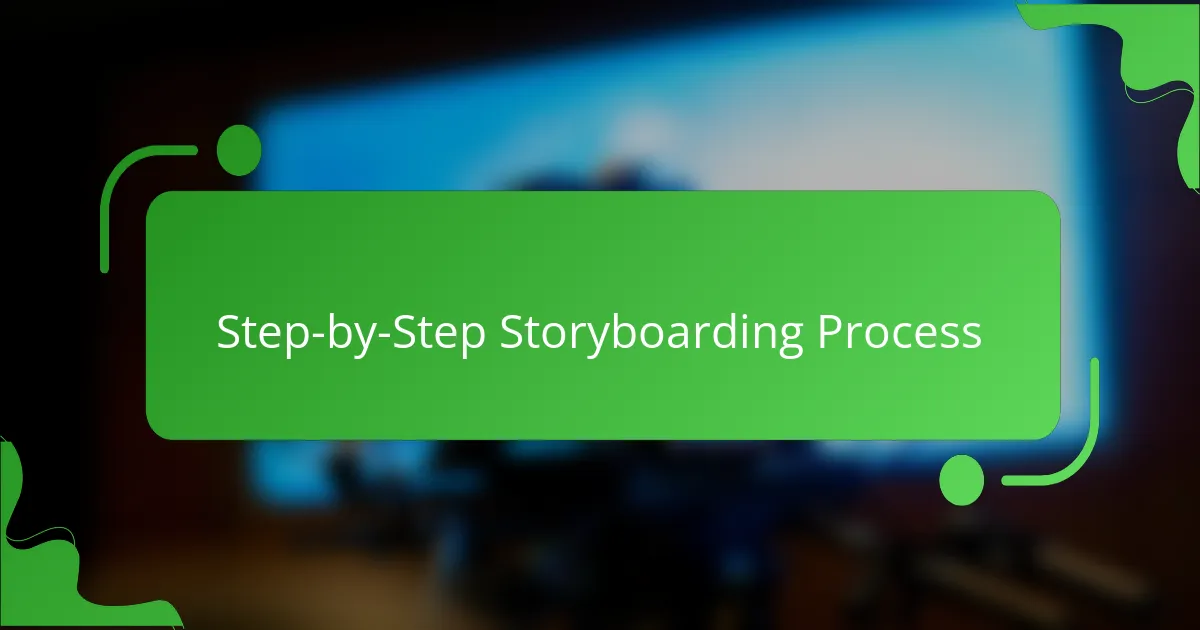
Step-by-Step Storyboarding Process
The storyboarding process begins with a clear concept in mind. I usually start by writing a brief outline of the plot. This stage is crucial, as it helps ground my ideas and set the tone for what I want to visualize. It’s fascinating how a few initial thoughts can shape an entire storyboard, don’t you think?
Once I have the outline, I dive into sketching the key frames. I find this stage exhilarating; it’s like laying the foundation for an art piece. Each drawing captures pivotal moments, allowing me to see how action sequences flow into one another. I often think about how these sketches will translate on screen, especially in fast-paced edits—they need to communicate energy and emotion quickly.
After drafting the key frames, I move on to refining the details. This is where I add notes about camera angles, movement, and transitions. I can’t emphasize enough how important this part is, especially for an action short film. These annotations guide the shoot and save time during editing. I remember being in a pinch during a past project when these notes were my lifeline—transforming chaotic shoots into a well-orchestrated action sequence.
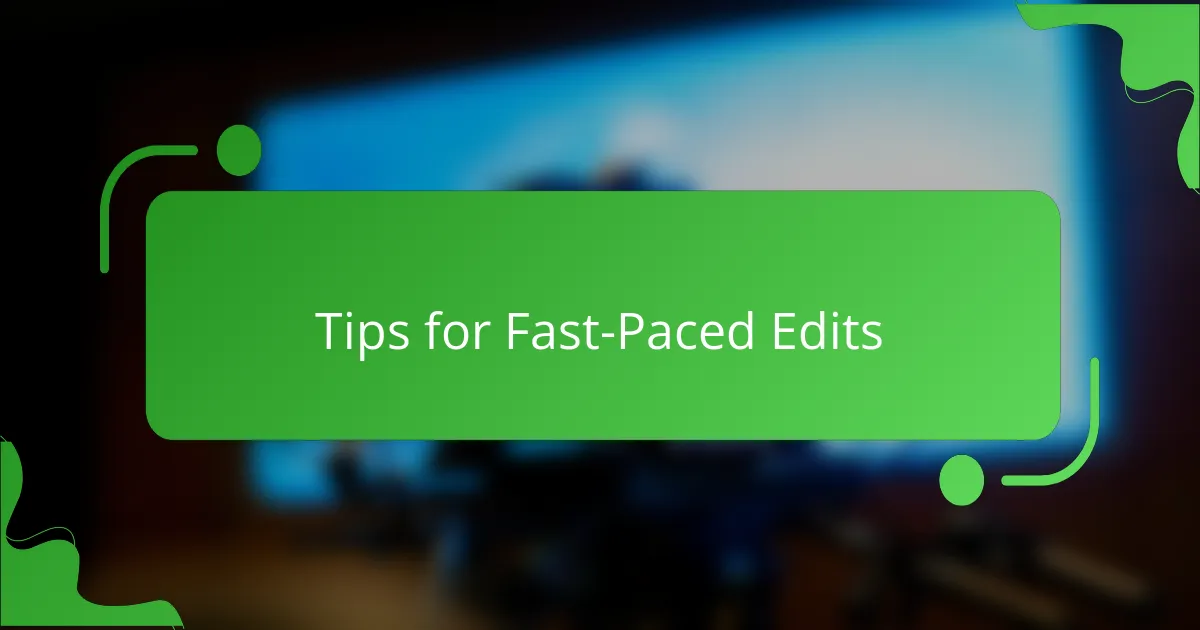
Tips for Fast-Paced Edits
When I think about fast-paced edits, one tip immediately comes to mind: embrace brevity. In fast-paced action films, every frame matters. I learned this lesson the hard way during an early project where I tried to cram too much dialogue into a scene. The result? A cluttered and confusing edit that detracted from the action. Limiting dialogue forces the visuals to convey emotion and motivation, making the storytelling sharper and more impactful.
Another key technique is to experiment with rhythm in your cuts. This often means matching the pace of your editing to the beats in the accompanying soundtrack. I recall a scene where I timed rapid cuts to a music drop; the effect was electrifying! The audience felt the pulse of the action as the scenes unfolded in sync with the music. This synergy between audio and visual can elevate your edit, creating a memorable experience for viewers. Have you tried adjusting cut timing to enhance the rhythm? It can transform a good scene into a fantastic one.
Finally, consider the composition of your shots carefully. An action sequence can lose its energy if the framing goes awry. I once had a sequence where a poorly composed shot led to missed emotional beats, and it drastically affected the pacing. I’ve since learned to prioritize dynamic angles and tighter frames to maintain momentum. Always remember, a well-composed shot not only looks good but keeps the action gripping and engaging for your audience. What shot compositions have worked for you in fast-paced edits? Each choice can significantly influence the storytelling.
